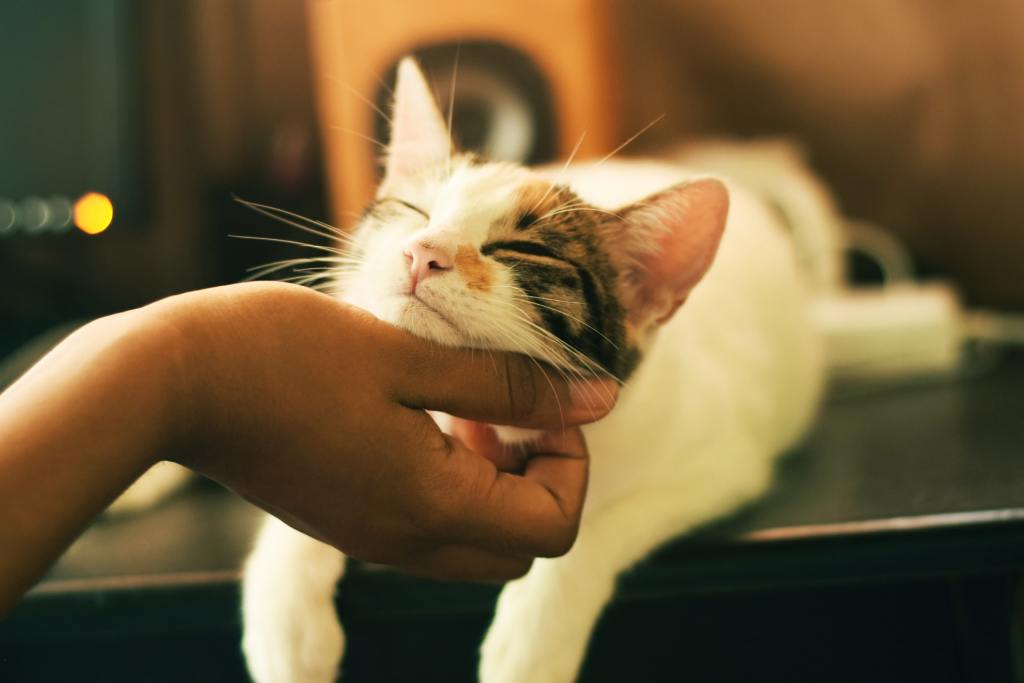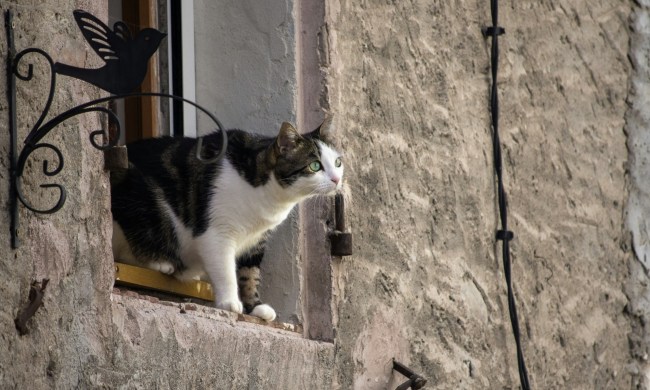It’s normal for cats to get stressed and upset by certain events, but sometimes that stress goes too far and becomes a problem for your cat. If you know that a stressful event, like a trip to the vet or groomer, is about to take place, you can help reduce cat stress with calming aids. These aids are available in everything from gel supplements to comforting wraps, and they each work slightly differently. Our top picks for the best calming aids for cats feature several designs, so you can try out a few options and determine what works best for your cat and you.

VetriScience Laboratories Composure, Calming Formula for Cats
- Safe for long-term use
- Takes 20-30 minutes to see the effects
- Features colostrum, L-theanine, and thiamine
The VetriScience Laboratories Composure, Calming Formula for Cats chews use natural ingredients to promote a relaxed outlook in your cat. These chews won’t affect your cat’s personality. They feature colostrum, L-theanine, and thiamine to support his behavioral health. The soft chews have an appealing chicken liver flavor, so they’re easy to feed. You can start to see the effects in 20 to 30 minutes and can double or triple the dose if needed. The chews are safe for long-term use, and their effects last up to four hours — ideal for feeding before a trip to the vet or having guests over to your house.
ThunderShirt for Cats
- Applies gentle and consistent pressure to calm cats
- Machine washable
- Comes in two sizes
The ThunderShirt for Cats is a calming wrap and helps reassure your cat when he’s stressed or anxious. The vet-recommended design applies gentle and consistent pressure for an effect that’s similar to what happens when an infant is swaddled. You can use the ThunderShirt for all sorts of situations, including a trip to the vet, a nail trim, and thunderstorms. The fabric is durable and resists collecting hair, keeping it neat and letting you reuse it without having to wash it every time. It is machine washable when needed and comes in two sizes. The ThunderShirt is adjustable to help you get the perfect fit.
ThunderWunders Cat Calming Paw Gel
- Easy to apply
- Features chamomile, oat, and passionflower
- Salmon taste encourages your cat to lick it
The ThunderWunders Cat Calming Paw Gel is an easy way to support your cat with a calming solution during stressful times. The gel is easy to apply — just squeeze a 1-inch strip onto your cat’s paw. When your cat cleans himself, he’ll lick the gel. The gel features quality ingredients like chamomile, oat, and passionflower and helps soothe and relax your cat. A tasty salmon flavor encourages your cat to lick up the gel. The formula is vet recommended and drug-free, so you can use it with confidence.
Vetoquinol Zylkene Behavior Support Capsules
- Features alpha-casozepine
- Lactose- and preservative-free
- Easy to feed
The Vetoquinol Zylkene Behavior Support Capsules can give your cat extra support during stressful events without making him sleepy. This formula won’t tranquilize or sedate your kitty, but it does help to promote a sense of calm. It features alpha-casozepine, which promotes relaxation in babies and has a similarly positive effect on cats (and dogs). The formula is free of irritants like lactose and preservatives, which makes it a good choice if your cat has a sensitive stomach. You can give the capsule by mouth or open it up and pour it over your cat’s wet food for easy feeding.
Nutramax Solliquin Calming Small–Medium Dogs & Large Cat Soft Chews
- Features L-theanine, floral extracts, and whey protein
- Safe for daily use
- Easy to feed
The Nutramax Solliquin Calming Small–Medium Dogs & Large Cat Soft Chews support balanced behavior and a calm outlook in your large cat. The chews feature L-theanine, floral extracts, and whey protein, putting natural ingredients to work instead of relying on medications. The chews are tasty, so you can feed them to your cat just like a treat. They’re even safe to be given daily, so they can provide your cat a boost of support during trips to the vet, visits from friends, and more.
It may take some experimentation before you find the calming aid that’s just right for your cat. Some of these aids can be fed at different dosages, and you may also need to try different timings so you give your cat the extra support right when he needs it the most. While you can’t remove every source of stress from your cat’s life, these calming aids can make it easier for your cat to deal with major stressors when they do occur. The result will be a happier, healthier cat.


